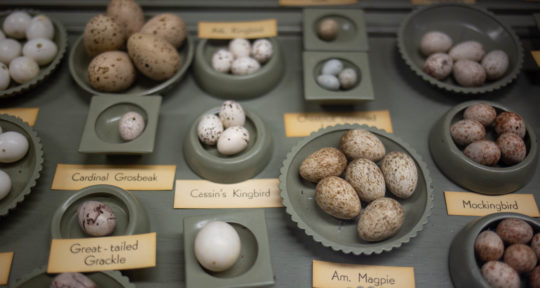I feel a little bit nervous walking into the office at Rosedale Cemetery on a Friday afternoon in March. There’s snow on the ground, but inside the tiny office it feels tropical. I’m greeted immediately by two very friendly women, and their welcoming faces set me at ease.
“I’m looking for three specific graves, and I was hoping that you could help me find them?” I ask.
“Sure,” one of the women replies, grabbing a pen and a scrap of paper. “What are their names?”
As I spell out the names of three sisters, the woman looks up from her desk, squints her eyes, and says, “Now, why do those names sound so familiar?”
“They’re ‘Radium Girls,’” I say. “Are they popular here?”
She nods her head and says, “Yes, very.”

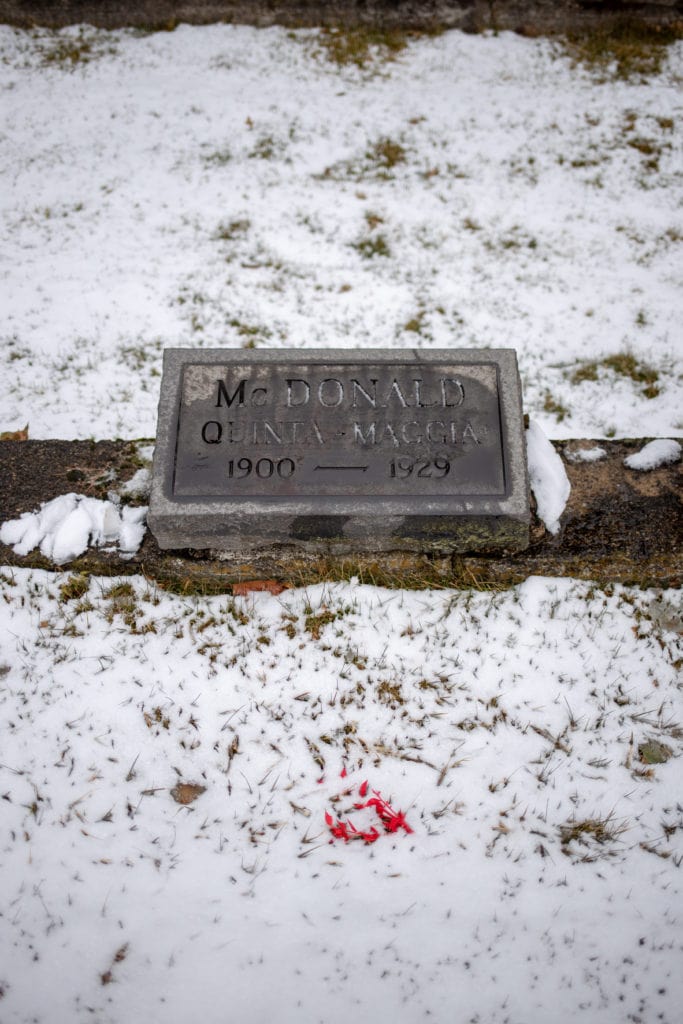
Mollie’s gruesome fate
Amelia “Mollie” Maggia was born on December 21, 1897, smack dab in the middle of seven Maggia sisters: Louise, Clara, and Albina were older; Quinta, Irma, and Josephine were younger. Four of the sisters worked at the U.S. Radium Corporation factory, located at the intersection of High and Alden Streets in Orange, New Jersey.
The U.S. Radium Corporation extracted and purified radium—a chemical element found in the alkaline earth metals section of the periodic table discovered by Marie Curie and her husband in 1898—and used the resulting product to manufacture phosphorescent paints. The paints, sold under the brand name Undark, were used for numbers on the dials of military watches. As one of more than a hundred (mostly women) workers at the factory, Mollie was encouraged to shape her fine brushes into a point with her mouth after dipping them into the luminous paint, to better render fine details on the watch faces.
When Mollie died in 1922—at just 24 years old—several causes of death were blamed, including ulcerative stomatitis and syphilis. But in the year prior, Mollie’s jaw had been removed after it began to break apart, she developed anemia, and her mouth would not stop bleeding. By 1927, more than 50 other women had suffered similar fates, in addition to crumbling teeth, collapsed spines, foul breath, pregnancy complications, aching joints, unexplained weight loss, extreme exhaustion, and brutal hemorrhaging. All of which were eventually determined to be caused by the women’s repeated exposure to, and ingestion of, radium.
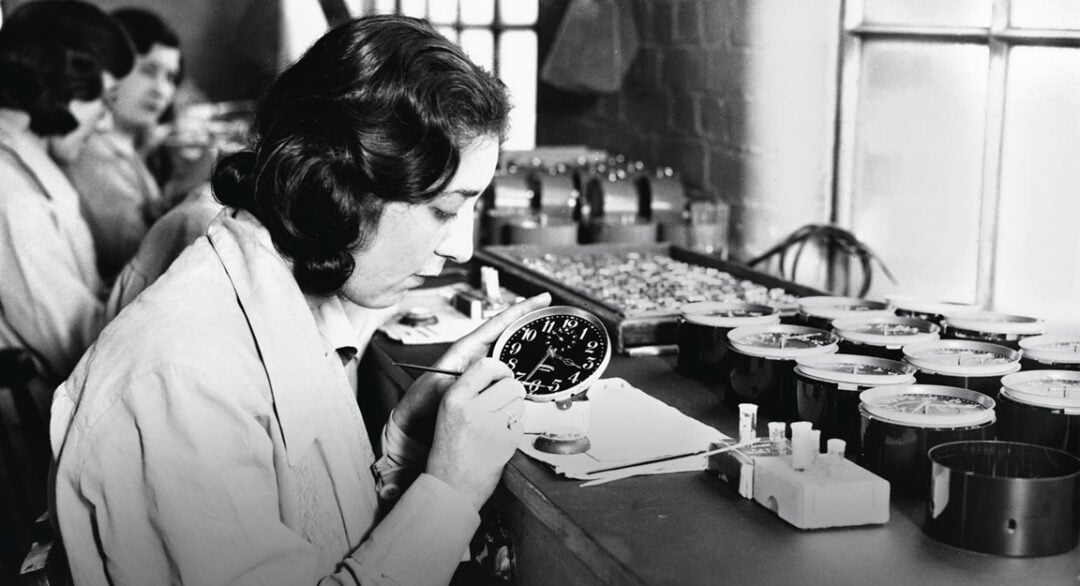
“Later studies showed that the radium had actually bored holes in the women’s bones while they were alive—a horrifying and agonizing reality,” says Kate Moore, author of The Radium Girls: The Dark Story of America’s Shining Women. “Yet when presented with these women in dire pain, aspirin was initially deemed an appropriate analgesic.”
An exciting new substance
Still, the U.S. Radium Corporation insisted that its eponymous product was safe. After its discovery, radium was heralded as the new cure-all and added to toothpaste, water, food, and cosmetics—with little regulation; sometimes it was enough just to say your product contained the radioactive element, which was costly to obtain.
In an era and region with few economic prospects for young women, the dial painters were grateful for their jobs (taking home an average of 1.5 cents per watch dial) and took pride in working with an exciting new substance. They would intentionally paint parts of themselves so they glowed, or wear their best dresses to work in hopes that they would shimmer all night long. Although the glow would last far longer than anyone expected, the excitement of working with radium did not.
In 1927, five dial painters filed a lawsuit against the U.S. Radium Corporation, despite the odds not being in their favor. Representatives from the corporation along with doctors, lawyers, and members of the Maggia family watched as Mollie’s body was exhumed from beneath its headstone in section 8 of Rosedale Cemetery.

Her body, noted to be in “a good state of preservation” 5 years after her death, was taken to a nearby funeral home for an autopsy, which showed definitively what her family had suspected: “each and every portion of tissue and bone tested gave evidence of radioactivity.”
A Geiger counter and a grave
Nearly 100 years later, my main purpose in visiting Rosedale is to pay my respects to Mollie and two of her sisters, Quinta and Albina, who also worked at the factory. By the time Mollie’s bones were being dug up, Quinta had fractured both of her hips and Albina was bedridden. While I was able to locate Mollie and Quinta, when I inquired about Albina, I was told that Rosedale “used to have her, but doesn’t anymore.”
Because radium has a half-life of 1,600 years, I had heard that the girls’ remains were still so radioactive that a Geiger counter held above ground would register their elevated radiation levels. A 2020 film based on the Radium Girls’ story ends with the declaration: “If you place a Geiger counter over the grave of a Radium Girl, it will click for more than a thousand years.” I wanted to test that theory, which is how I ended up in the middle of a snow-covered, historic cemetery in New Jersey, waving a bright orange, handheld Geiger counter over the graves of Mollie Maggia and Quinta McDonald.
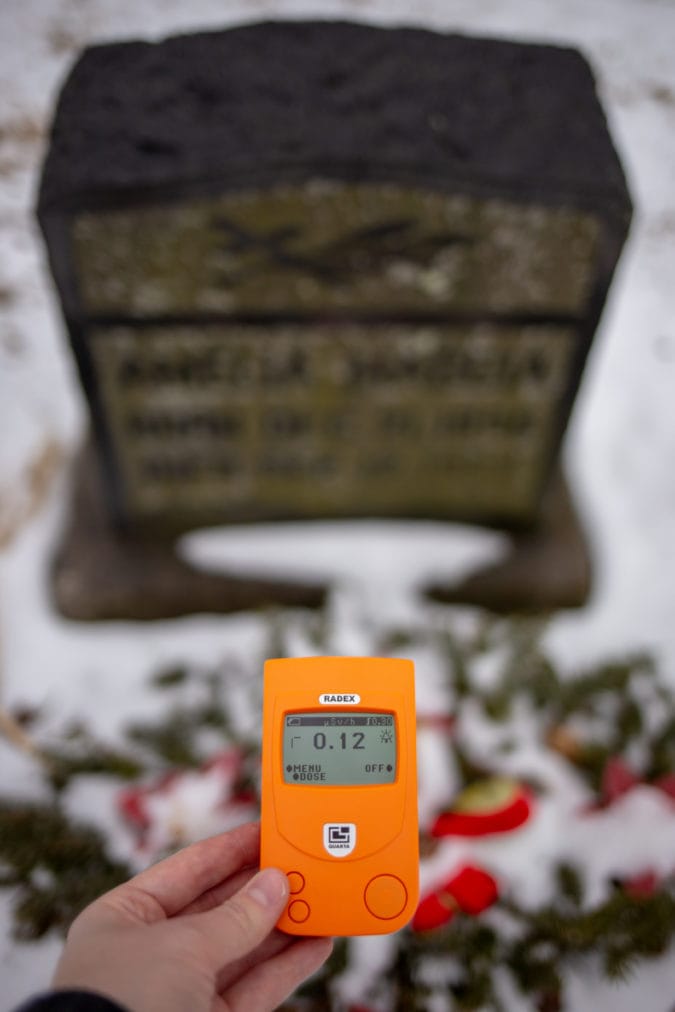
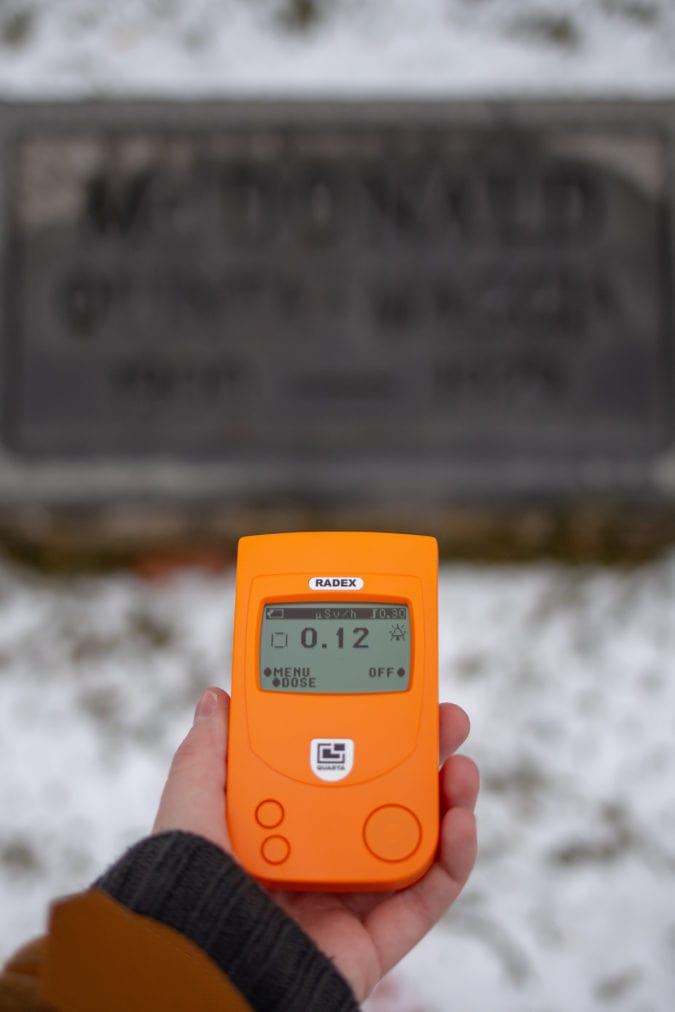
Over the course of an afternoon, I tried several different positions, but I was never able to register even the slightest uptick in radiation—in fact, a few hours earlier, I had tested the newly-purchased device on my cat (as one does) and she registered a slightly higher reading than I ever received at either grave. Both registered an average of 0.10 to 0.13 microsieverts per hour; real panic doesn’t begin until way past the 0.8 range, and readings of 1+ indicate a serious cancer risk with prolonged exposure.
Hysterical women
While reports of their graves’ radioactivity may have been exaggerated, it’s no surprise that the dial painters’ pain and suffering were underreported during their short lifetimes. History is full of instances where women’s pain and other medical issues haven’t been taken as seriously as men’s: “It’s a shocking fact that even though dozens of young women had died from radium poisoning, it took a man to die before an autopsy was conducted to find out if radium might be killing the firm’s employees,” says Moore.
“Until that point, the women found their concerns were sidelined and belittled, their symptoms misdiagnosed—including for the STD syphilis, with all the social stigma involved in that—and the facts swept under the carpet and covered up. So, yes, I do think that their gender played a role in the shocking delay in recognizing this occupational poisoning—the facts completely support that.”
After a lengthy and expensive legal process, including numerous appeals, the women finally settled their lawsuit in 1928. The terms specified that they were each to be awarded $10,000, in addition to $600 per year for life. Of the five defendants, Albina Larice lived the longest—she died in 1946.
But New Jersey wasn’t the only place experiencing the devastating effects of radium exposure—another group of dial painters in Ottawa, Illinois, brought a similar lawsuit against the Radium Dial Company and also won. These victories, due in part to Mollie’s posthumous sacrifice, marked one of the first times in U.S. history that an employer was found negligent and required to pay settlements to its workers. Going forward, protective measures were required when working with radium—a good thing, considering that the onset of WWII meant that the demand for luminous watches, and the women who painted them, skyrocketed.
Workplace regulations
It’s tempting to think that we’ve come a long way since Mollie Maggia’s jaw crumbled while the U.S. Radium Corporation profited from her efficiency as a worker—but it wasn’t until 1970 that the U.S. Congress officially passed the Occupational Safety and Health Act and established the Occupational Health and Safety Administration (OHSA).
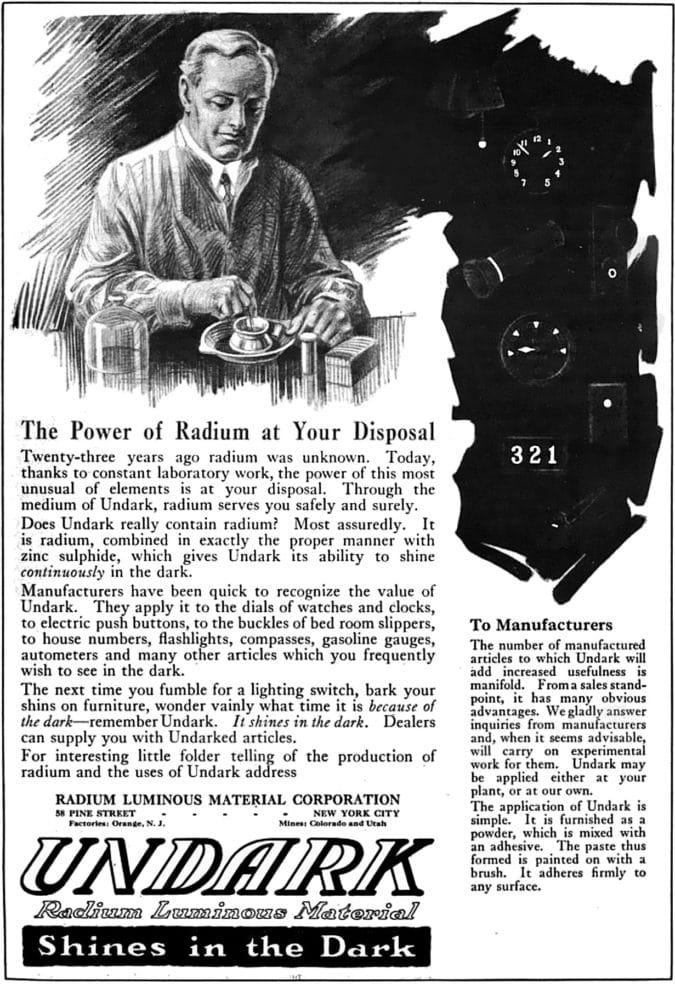
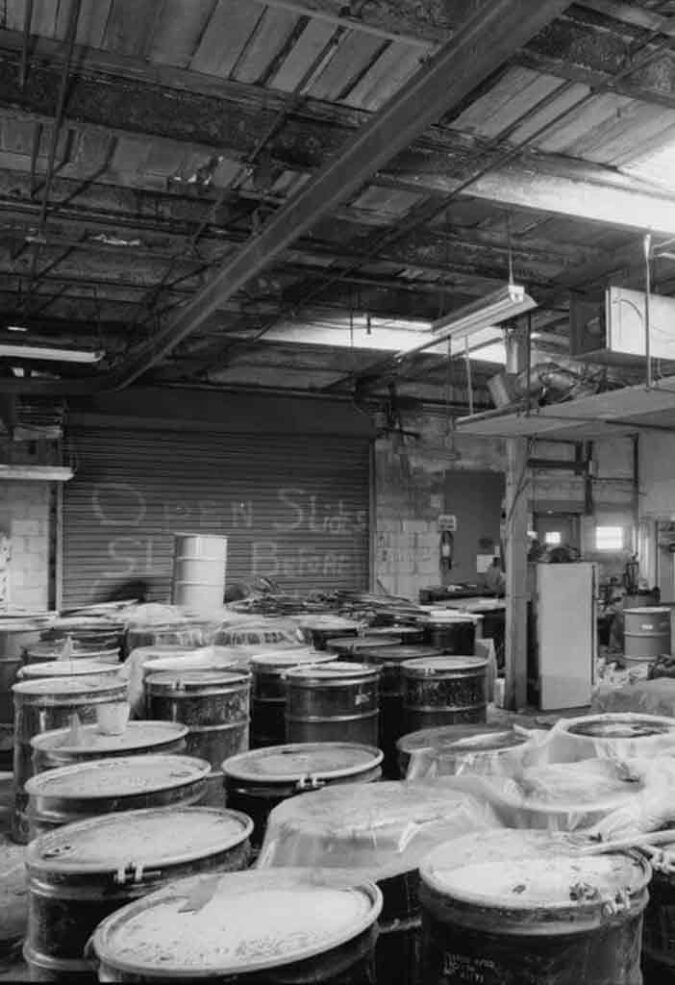
Nearly a century after Mollie’s death, women still face dangers in the workplace eerily similar to what the Radium Girls were up against. Exposure to chemicals has always affected men and women differently due to their body size and composition. In fact, “Women exposed to ionizing radiation during childhood suffer from cancer at a rate 10 times higher than predicted by traditional [male] models used by the United States Nuclear Regulatory Commission,” according to Mary Olson, a biologist at the Nuclear Information and Resource Service (NIRS).
But just as the radium fad faded, other chemicals have entered into daily life without the proper long-term research studies to determine their potential to cause harm. Chemicals commonly used in nail salons, for example—absorbed daily by primarily female employees—are known carcinogens and can cause birth complications, breathing problems, and skin irritation. The more these biases and unfair practices are exposed by champions like the Radium Girls and others, the faster they will go away—hopefully faster than the radium still insidiously lurking within the remains of the dial painters.
“[The Radium Girls’] experiences are a reminder that we need to listen to whistleblowers; and they themselves can inspire us to fight against injustice and attempts to silence truth, no matter what it takes,” says Moore. “They must not have died in vain; we all owe it to them to keep making the world a better and safer place.”
Take this trip
This article has links to products that were carefully selected by our editors. We may earn commission on your purchases from these links. Visit this page for the full details of our affiliate marketing policy.

